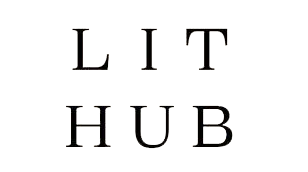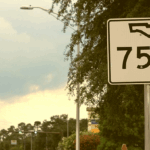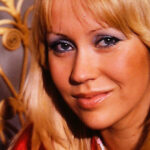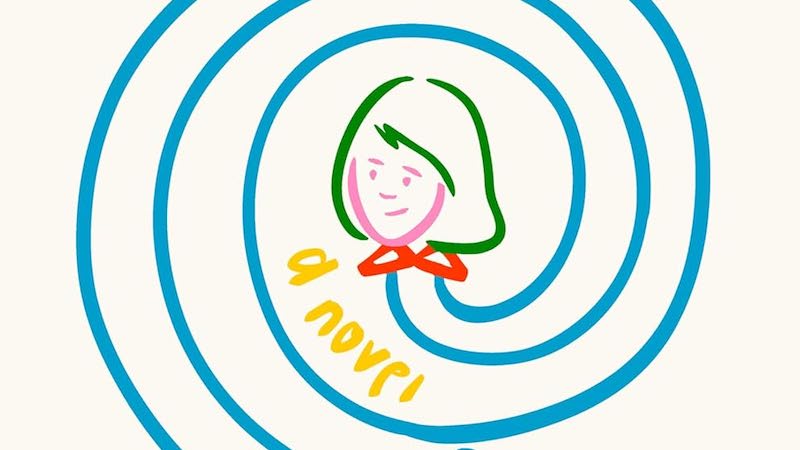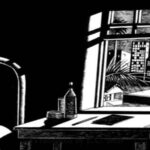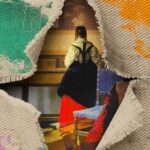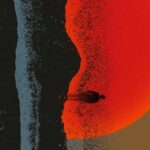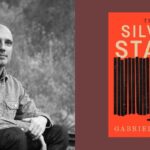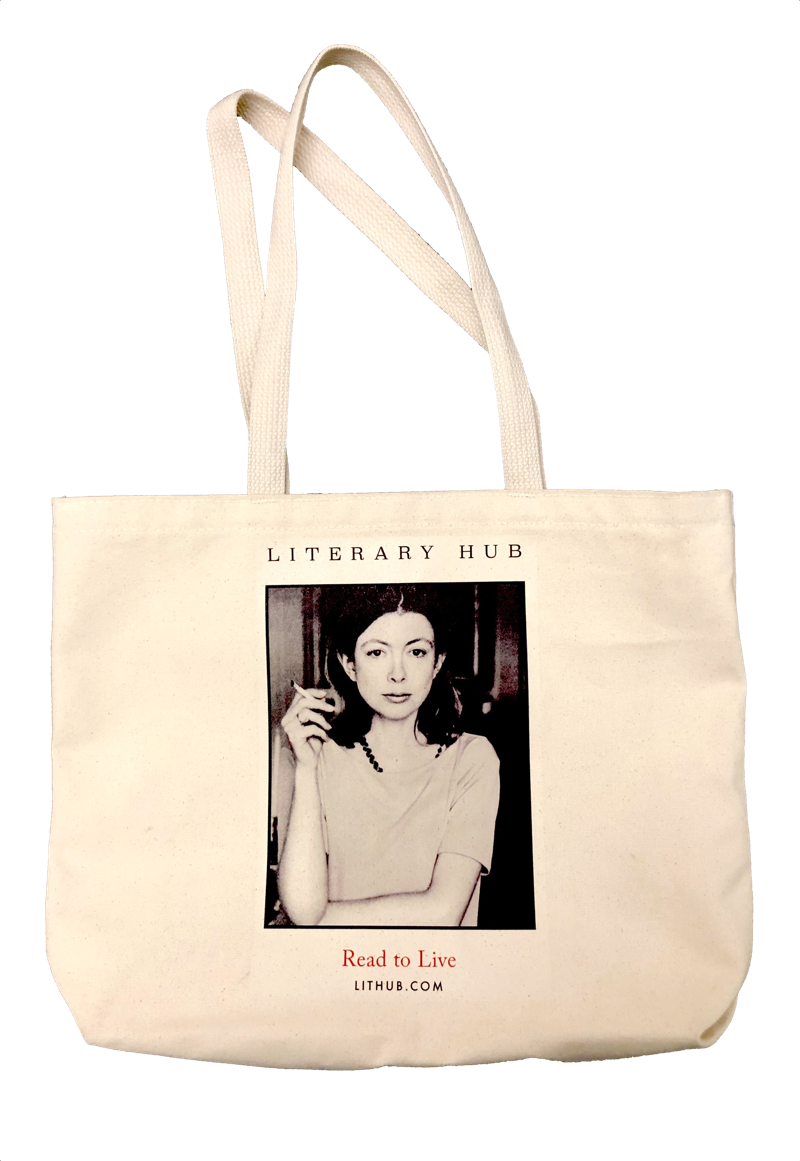The Pain, Hidden in Plain Sight, of John Cheever’s Darkest Work
Rick Moody on Bullet Park
Bullet Park was the first work by John Cheever of which I was made aware, the first in which I was alert to the author as a particular person with a style and set of interests. This was in a high school creative writing class, by which I mean boarding school, citadel of privilege in the Northeast, among the children of a Cheeveresque social stratum. The teacher of the creative writing class was a lugubrious and hilarious chemistry teacher of my school, Mike Burns, who wrote fiction on the side. The entire idea of this creative writing class was arcane, idiosyncratic, neglectable, non-traditional. My school was, it seemed, not certain that creative writing was an academic discipline, not in 1976, and therefore creative writing amounted to an off-label use of the curriculum, especially in the company of our chemistry teacher, a tragicomedian, who clearly had a knack for listening well to the misfits and the outliers of the community. He mumbled sometimes, and would fix you with an eye at once sympathetic and judicious, and get right at the heart of your stylistic difficulties. It was a fine course of study.
One day Mike Burns read aloud to us from Bullet Park. He gave it a Mike Burns introductory mumble, namely, Look, in this book there is a character called Hammer and a character called Nailles, and it’s about the way the coincidence of their names throws them together. Only Cheever could pull this off, so that means that you shouldn’t try it at home. Now is your chance to admire the conceit, however, and that would be the right thing to do, admire. Followed by his joyous and tragicomic chuckle.
This was a momentous day in the writing workshop for me not because I immediately understood Bullet Park, which was full of ironies that were not all detectable by a 15-year-old, but because the field was seeded for Cheever’s work, for its kaleidoscopy and weltschmerz, and, when The Stories of John Cheever was published in 1978, and his greatness was widely understood, as it deserved to be, I was prepared, and spent the entire summer between high school and college reading those stories, a diet that continued all the way through graduate school, eight years later, by which I time I was unapologetically obsessed with, for example, the later stories, especially those from The World of Apples, which collection followed Bullet Park. The obsession remained after graduate school, when I went back and reread the two Wapshot novels, The Wapshot Chronicle and The Wapshot Scandal, Cheever’s first two novels, and Oh What a Paradise It Seems, his last, and by then I was perfectly situated, as were a great number of other writers of my generation, to be deeply affected by Susan Cheever’s Home Before Dark, her memoir of her father, which succeeded his death, and, later, by the seismic, heart-rending Journals of John Cheever, which appeared in due course.
At this point, I have written about him, and worked in his shadow, for, well, 35 years or so.
In the course of these decades, I have read, and reread, Bullet Park, always with a certain amount of concern. Is that the right word? There are, at this point in history, two things to worry about with respect to John Cheever, two sets of biographical narratives orbiting around the interpretation of the work, and the first of these involves the author’s alcoholism, and the second concerns the complex status of his sexuality as it shadows forth in the pages. In the former case, the reason to worry is that with Cheever, as with many other writers of the period (Faulkner and Hemingway, sure, but also Styron, Yates, perhaps, Kerouac, Exley, Sexton, Highsmith, Duras, Capote, Dorothy Parker, many, many others), you can feel the alcoholism sheering away some of what was most powerful about the writer’s inclinations. If one tracks the accounts of Cheever’s drinking to its end (in Boston, I believe, where, toward the mid-seventies, he did a little drinking in public, and failing to show up for class, and fraternizing with lessers, as they say in the drug treatment community), the end of his drinking lines up with the hardest part of his career. Bullet Park, which famously got a chary initial review in the New York Times, was forged in this bad patch, launched in this bad patch, and the reaction to it was bad enough that, in some accounts, it exacerbated the author’s already life-threatening drinking problem, not that exogenous factors can be blamed for addiction, which is probably, in part, a thing inborn.
Emotionally speaking, there is a great sadness that came to afflict the privileged few of Cheever’s later pages.
Some of the stories from The World of Apples exhibit a similar alcoholic symptomology. How would one describe these symptoms as they play out on the page? I see Cheever’s illness, in part, in his retreat from a realism that he had perfected as few others had, that he had celebrated abundantly. Creative writing students, you know, can often quote from “Goodbye, My Brother,” one of Cheever’s earliest successful stories, and there are others, “The Enormous Radio,” or “The Five-Forty-Eight,” or “The Housebreaker of Shady Hill,” all of them with a profound and acute observational excellence, a compassion for the scale of human folly and failure as it is played out around us. On the one hand, the irrealism, the arguable experimental cast of later Cheever expands upon the way that myth and classicism began erupting around the edges in Cheever’s stories. A certain hovering in the register of mythology and folkloric storytelling causes these stories to buzz on a number of levels. They both tell the truth of realism (and the tragicomic realities of a certain class), but they also have something ancient about them, some consistency with the eternal mystery of storytelling.
But the chaos and despair was also getting the better of the work. Emotionally speaking, there is a great sadness that came to afflict the privileged few of Cheever’s later pages. From the late sixties, it had become obvious that this thing that the author had done for so long was no longer easy for him to do. It was as if he had lost some faith in the compositional materials that animated him. He is, in a way, searching around for narrative handholds, for characters of the traditional sort, and finding situational placeholders instead. It’s obvious, for example, that “The Swimmer,” the perfect example of a transitional story in the Cheever oeuvre, is no longer true in the way the earlier stories were. It’s also not about a person, in the same way that Hammer and Nailles are not exactly people, but are rather as archetypal as household tools. I remember having it out with Angela Carter, when I was her student in the early 80s, when Carter said of “The Swimmer,” “What makes him think all those women want him?” As if, that is, the various pools in which the protagonist refreshes himself in that story can easily be reduced easily to a symbol of the feminine, or of some compulsive sexual exploitation. I think Cheever was tilting at much bigger things, had an intuitive grasp of the kinds of collective imagery that animate Rabelais, and Cervantes, and Sterne, of even Ovid, but what he was not doing was telling the realistic story of a particular guy. (And see here, if you haven’t read it, John Gardner’s defense of Bullet Park, which makes a similar case, and which is indexed on the New York Times’ site.
There was still that voice, that inimitable and dazzling voice of the joyful and the despairing, but it was engaged in prying narrative loose from its fittings, and looking for a thing drenched in pre-history, primal ideas of morality, and in the capabilities of language itself. We see it, for example, in Bullet Park, in the half-light of Tony Nailles, the son of the protagonist, who can’t get out of bed, after his father briefly considers battering him with a golf club. The slow burn of Tony’s chronic depression, and the way the book inches toward an explanation for it—the murderous rage that a father can have for a son—is, well, both comic, and deeply upsetting. It is both improbable and, at an extreme, somehow sadly accurate. Likewise the “bastard” Hammer, who also plots to kill Tony, and/or his father, later in the book (because his mother, before expiring, has suggested the political worthiness of murdering a suburban capitalist in Bullet Park), and whose bastardy, and his further abandonment by both parents, is an ostensible cause. The pages of Bullet Park tease plausibility, and they are deeply sad, and they are, it seems to me, afflicted with the illness in which one self-slaughters rigorously and comes up with innumerable excuses for it, in casual deceits visited upon family and friends.
Alcoholics, one might observe, are great storytellers, because they are so used to lying. Bullet Park is a book saturated with a psychology of alcoholism. What seems to be intimations of the dark hues of morality in Bullet Park feels also to me like kinds of teetering moral insolvency; or at the very least Bullet Park is about struggling with how to present the self, when the self is so divided. Why all the attempted murder, the castoff wives, only occasionally bothered about, the professional mediocrity of just about everyone, the moments of dialogue that are more like parallel play than than like people inquiring into one another, the isolation, the drinking, the addictions, the racially dubious swami who treats and “cures” Tony Nailles. All is deprivation and longing, and disaffiliation, the construction of society from a distant memory thereof, and the burden of the good life cast aside, as in purgatory, or even deeper down.
We don’t feel the same chronicity of these dark latitudes in Oh, What a Paradise It Seems, from when Cheever was sober, nor did we get it in the early stories, when the author was younger, less afflicted, and, in a way, more exuberant. But in the middle and later periods, the work is as afflicted as the author was, progressively, and the darkness, feels, to me like a crisis of vocation. When you get to “The Jewels of the Cabots,” in The Stories of John Cheever, the last collected short story by John Cheever (although there are a few later fragments floating around, and they are really interesting), you can still feel the castoff selves like puppets still affixed by strings to the ceiling, but you can also see, feel, hear, a solution glimmering in the distance, a period in which, again, emotional clarity was a prized narratorial possession. It’s everywhere in Falconer, his next book, the beginning of the solution.
Bullet Park throbs with discomforts that cannot be said entirely, and imagines convulsions of inexplicable cruelty and autumnal bleakness that can’t quite be explained except that they are there, in the human animal.
Well, it’s everywhere in Falconer except in the matter of the author’s sexuality. For readers who care passionately about Cheever’s work, and I am one of them, Blake Bailey’s account of the author in Cheever: A Life is a hard book to live with, in particularly this area. In Home Before Dark and The Journals of John Cheever, we got used to a John Cheever at once occasionally homophobic and sexually attracted to men, anguishing in a pitched battle being worked out in him and on the page, but it’s quite bit harder to revere a writer with moral clarity (and the language with which to speak of it) who also made repeated passes at male students and younger colleagues, or worse, did far worse than just make passes, in Bailey’s account, like persuading male students to live in his house, chop would for him, and have sex with him even though they didn’t really want to. Or so it is said. In the area of sexual identity, Cheever seems to have caused, at least, wreckage, consternation, and upset. As with his alcoholism.
It is not, I don’t think, that we need a comprehensive theory of Cheever’s sexuality in Bullet Park (or in, e.g., The Wapshot Chronicle, where we find, for example, “And now we come to the unsavory or homosexual part of our tale, and any disinterested reader is encouraged to skip”), in order to appreciate the work; it is not that we need, necessarily to account for the disdainful use in Bullet Park of the word “faggot” in a way that no thinking person would use it now, and the attendant descriptive cruelties. Nor do we need to dwell overlong on the ravages of alcoholism and addiction. And yet knowing what we know, it’s hard not see these things being worked out abrasively elsewhere, both by implication and in a closeted way, in the intense anguish of Bullet Park, in Elliot Nailles’s misogynies, his rants about son Tony and the dreaded television set, his almost sexual liaisons with men, despite the homophobia. It’s almost as if concealment, and lacunae, and the purgatorial agony of these, are the tropes above all in Bullet Park. Where Falconer deals with Cheever’s sexuality by situating the protagonist in lockup, both metaphorically and actually, in a highly allegorized setting, an idyll of the purely masculine, beginning there to find a way out, Bullet Park throbs with discomforts that cannot be said entirely, and imagines convulsions of inexplicable cruelty and autumnal bleakness that can’t quite be explained except that they are there, in the human animal, in a kind of fragmentation of biographical material, an atomizing of authorial selves, hiding in plain sight in a recrimination of self-induced moments of boorishness, nonetheless dressed up in perfect interior decorating and cocktail parties.
it appears that Bullet Park and its many pleasures come from the darkest spot, the perigee of the author’s orbits.Bullet Park is the only work by John Cheever that I know of that is really like this, so riven as to be painful to read. By the time of the author’s sobriety, though he had not, perhaps, worked out his attraction to men in a way that, these days, we might consider holistic or appropriate, he had stopped hiding it entirely, and talking around it, and in the beginning of acceptance he could make the word Paradise in his last novel stick. His last story, published in The New Yorker, entitled “The Island,” is a heavily ornamented bit of idealism, which I take to be an allegory for Alcoholics Anonymous, the organization that gave Cheever back his life, and gave him a language of self-acceptance. It has lines in it like: “On the island they all seemed happy to be digging and eating shellfish and reading the classics.” And then, subsequently, there is all the limpid and wondrous observation of the world in the Journals of John Cheever, an utterly compelling and profound outpouring of human emotions, which even at their most unhappy are generous and verifiable and true, and pointing the way toward a vision of language itself as a thing worthy of faith, the route to a peaceable life.
And yet what I mean to get to here is this: I cannot tell you how much I enjoyed rereading this book, Bullet Park, in order to write these lines. I cannot sufficiently tell you how beautiful it is, from its Virgilian opening, “Paint me a small railroad station then,” and its parody of real estate language, to its radical and impulsive shift from third to first person, to its daring play with archetype, so inimical to character; Nailles’s pill addiction; Hammer’s lassitudes in Europe (where Cheever always goes to find the origins of story); unto the creation of the infernal town Bullet Park itself, an obverse to Cheever’s more frequent suburb of choice, St. Botolph’s; its palpable short-stories shoehorned in again (as in the Wapshot novels) into novel form, wherein novelistic arc only occasionally intrudes, so that the reader must luxuriate on this very page, and so on. As is not infrequently the case with the writers of the 1950s and 1960s, many of them now in the midst of being sedimented over by the writers of the millennium, there is nuance in abundance, there is dialectical movement, and, lest we forget, there is truly staggering prose. To read Cheever, no matter what you think about his lingering preoccupation with the suburbs, no matter what you think about his human weaknesses, is to read one of the most gifted describers and observers of the world of the twentieth century:
Below the house, near the grove of dead elms, there was a swamp where a flock of red-winged blackbirds nested each spring. According to the law of their species they should have turned south in the autumn but the number of bird-feeding appliances in the neighborhood, overflowing with provender, had rattled their migratory instincts and they now spent the autumn and winter in Bullet Park in utter confusion. Their song—two ascending notes and a harsh trill like a cicada—was inalienably associated with the first long nights of summer but now one heard it in the autumn, one heard it in the snow.
From such a vantage point, it appears that Bullet Park and its many pleasures come from the darkest spot, the perigee of the author’s orbits, and as such it is on the list of books that tell us a great deal about literature’s gaps, its shortcomings as well as its successes, and about the inner lives of the practitioners thereof, whether they want to be known or not. I cannot now, and probably never will, think of Bullet Park as the Cheever work I want to turn to first. And the Cheever who is revealed there, in the activist narrator of its pages, is a complicated and troubling individual, but I cherish him even in his worst spot. Hammer and Nailles, attempted murder in the suburbs, addiction, mental illness, and blackest despond (to use a word he liked), they all lead to what was more hortatory in other cases, but however difficult is Bullet Park, I treasure it and its author.
